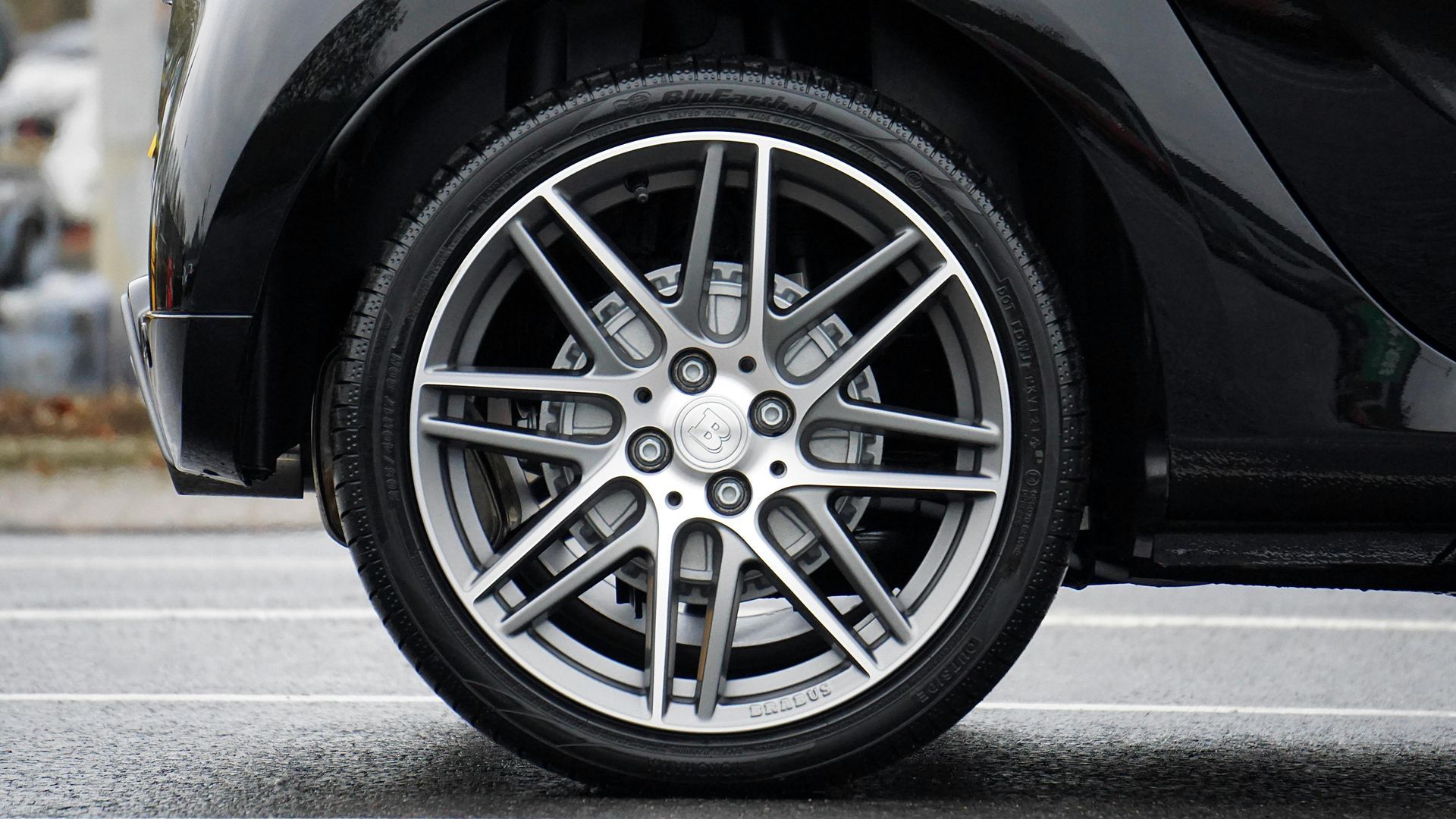Did you know that over 30 million tires are discarded in the United States each year due to damage that is deemed unrepairable?
When it comes to tire damage , not all issues can be fixed through simple repairs. Certain conditions and factors can render a tire unsafe and beyond repair, necessitating a replacement to ensure optimal performance and road safety.
In this article, we will explore what constitutes an unrepairable tire , the risks of driving on damaged tires, and the criteria used to determine whether a tire can be repaired or needs to be replaced.
Key Takeaways:
- Each year in the United States, over 30 million tires are discarded due to unrepairable damage.
- Not all tire damage can be repaired, and certain conditions warrant tire replacement for safety reasons.
- Understanding the criteria for an unrepairable tire is essential for maintaining road safety and optimal tire performance.
- Driving on damaged tires can lead to increased risks of accidents and blowouts.
- When assessing tire damage , factors such as sidewall damage , punctures, and tread wear beyond safe limits must be considered.
The Imperatives of Tire Safety and Maintenance
Tire safety and maintenance are crucial aspects of ensuring a safe and reliable driving experience. Neglecting proper tire care can lead to accidents, reduced performance, and costly repairs. By understanding tire lifespan , replacement criteria, conducting regular inspections, and following maintenance best practices, drivers can significantly enhance their safety on the road.
Understanding Tire Lifespan and Replacement Criteria
Knowing when to replace a tire is essential to maintain optimal safety and performance. Several factors contribute to tire lifespan , including tread wear and age. The tire's tread depth serves as an indicator of its ability to maintain traction on different road conditions. As the tread wears down, it becomes less effective, increasing the risk of accidents.
Additionally, tire age plays a crucial role in determining its ability to perform safely. Over time, tires may develop structural weaknesses, compromising their integrity. The general guideline is to replace tires that are more than six years old, regardless of their tread wear.
The Role of Regular Tire Inspections in Preventing Accidents
Regular tire inspections are vital in identifying potential issues before they escalate into safety hazards. Visual inspections should be conducted at least once a month and before long trips. During inspections, drivers should check for signs of damage, such as cuts, bulges, or punctures, and ensure proper tire inflation.
Furthermore, professionals recommend having tires inspected by trained technicians at least once a year. These inspections can identify issues that might not be visible during routine checks. Trained technicians have the expertise to assess tire condition accurately, ensuring maximum safety on the road.
Tire Maintenance Best Practices
Proper tire maintenance involves adhering to specific best practices that contribute to longevity and safety. Here are some essential tire care tips:
- Proper inflation: Maintaining the correct tire pressure helps optimize performance, fuel efficiency, and tire lifespan. Refer to the vehicle owner's manual or the tire manufacturer's recommendations for the appropriate pressure levels.
- Tire rotation: Regularly rotating tires promotes even wear, extends tire lifespan, and enhances overall vehicle handling and performance. Refer to the vehicle owner's manual for the recommended rotation intervals.
- Wheel alignment: Proper wheel alignment ensures that tires wear evenly and maintain optimum contact with the road surface. Misaligned wheels can lead to premature tire wear and handling issues. Regular alignment checks and adjustments are vital.
- Tire storage: When storing tires, keep them in a cool, dry place away from direct sunlight, chemicals, and moisture. Store them in an upright position and avoid stacking them to prevent deformation.
By practicing regular tire inspections , following maintenance best practices, and understanding tire lifespan and replacement criteria, drivers can ensure their tires are safe, reliable, and in optimal condition. Prioritizing tire safety and maintenance not only mitigates potential accidents but also enhances overall driving experience and vehicle performance.
Risks of Driving on Damaged Tires
Driving on damaged tires poses significant risks to both the driver and other road users. It is crucial to understand the potential hazards associated with compromised tire condition and take immediate action to ensure safety on the road.
Statistics on Tire-Related Accidents
Statistics on tire-related accidents serve as a powerful reminder of the importance of maintaining proper tire condition. According to a report by the National Highway Traffic Safety Administration ( NHTSA ), tire-related issues contribute to a significant number of accidents each year. In fact, tire-related factors are estimated to be a contributing factor in approximately 11,000 crashes annually in the United States alone.
The Hidden Dangers of Sidewall Damage
Sidewall damage is one of the most common types of tire damage and can pose serious safety hazards. The sidewalls of a tire play a crucial role in maintaining its structural integrity and supporting the vehicle's weight. When the sidewall is compromised due to damage, such as cuts, bulges, or sidewall separations, it can lead to weakened tire structure and an increased risk of blowouts. This puts the driver and passengers at risk of losing control of the vehicle and can result in potentially life-threatening accidents.
It is essential to regularly inspect your tires for any signs of sidewall damage and promptly address it to prevent further deterioration. If you notice any abnormalities, seek professional assistance and consider tire replacement if necessary to ensure your safety on the road.
Assessing Tire Damage: Punctures and Industry Repair Standards
When it comes to assessing tire damage, particularly punctures, it's crucial to understand the industry repair standards and guidelines. This ensures that the safety and reliability of the tire are not compromised.
One of the primary factors to consider when assessing tire damage is the severity of the puncture. Factors such as size, location, and structural damage play a significant role in determining whether a tire can be safely repaired. A small puncture in the tire tread that hasn't caused substantial structural damage is generally repairable, while large punctures or those near the sidewall may render the tire unrepairable.
Industry organizations have established repair standards to guide technicians in determining the repairability of a punctured tire. These guidelines take into account the size of the puncture, the section of the tire affected, and the extent of the damage. Following these standards ensures that the repair process meets safety requirements and maintains the tire's performance.
It's important to note that the repair standards may vary depending on the type of tire (e.g., passenger, commercial, or off-road) and the manufacturer's recommendations. Consulting the tire manufacturer's guidelines, along with industry standards, helps ensure proper assessment and repair.
Criteria for Deeming a Tire Beyond Repair
In assessing tire damage, it is important to understand the criteria that determine whether a tire is repairable or beyond repair. When a tire sustains severe damage that compromises its structural integrity, repair may no longer be a safe or viable option. This section will delve into the factors that contribute to deeming a tire beyond repair and provide clear guidelines for making this determination.
The "No Repair Zone" Explained
One concept to consider when evaluating tire damage is the "No Repair Zone." This refers to the specific areas of a tire where repair is not recommended due to safety concerns. The No Repair Zone typically includes the sidewall, shoulder, or areas close to the tire's edge. These regions are highly susceptible to stress and could potentially fail if repaired, leading to unpredictable tire performance and increased risk of accidents.
Severity of Tire Punctures and Repair Limitations
Tire punctures vary in severity, and not all can be effectively repaired. The size, location, and extent of the puncture are crucial factors to consider when determining if a tire repair is feasible. In some cases, a puncture may be too large or in a critical area, making it unsafe or impractical to repair. Additionally, if a tire has undergone multiple punctures, its overall integrity may be compromised, necessitating replacement rather than repair.
What is considered an unrepairable tire?
In order to ensure road safety, it is crucial to understand what constitutes an unrepairable tire. Several key factors determine whether a tire can be repaired or not, including the extent of sidewall damage, tread wear beyond safe limits, and multiple punctures in critical areas.
Extensive sidewall damage is one of the main reasons a tire may be deemed unrepairable. The sidewall of a tire provides structural support and is crucial for maintaining proper tire integrity. If the sidewall is compromised or severely damaged, it poses a significant safety risk and renders the tire unrepairable.
Tread wear is another important consideration when assessing tire repairability. Tires with tread worn beyond safe limits present a decreased ability to maintain traction and properly grip the road surface, compromising overall safety. If the tread wear reaches a certain point, repair becomes impractical, and tire replacement is necessary.
Additionally, when a tire has multiple punctures in critical areas, such as the sidewall or shoulder, repair becomes unlikely. Punctures can weaken the tire's structure, leading to potential blowouts and further safety hazards on the road. It is crucial to recognize that attempting to repair such tires can compromise driver safety and the overall performance of the vehicle.
Understanding the criteria for an unrepairable tire allows drivers to make informed decisions regarding maintenance and replacement. Regular inspections and consulting with a professional tire expert can help determine when tire replacement is the safest and most appropriate course of action.
Alternatives to Repair: When to Opt for Tire Replacement
When faced with a damaged tire, it is important to consider all available alternatives to repair. While tire repair can be a viable option for certain types of damage, there are situations where tire replacement is the more appropriate choice. This section will explore the factors to consider when deciding whether to replace a tire, including a cost-benefit analysis and various influencing factors.
Understanding the Cost-Benefit Analysis of Tire Replacement
One important aspect of deciding whether to replace a tire is to conduct a cost-benefit analysis. This analysis involves weighing the costs associated with tire replacement against the potential benefits. While tire replacement may require an upfront investment, it can provide long-term advantages such as improved safety, enhanced vehicle performance, and increased overall tire lifespan. Additionally, replacing a tire that is beyond repair can prevent future complications and monetary expenses that may arise from continued use of a damaged tire.
Factors Influencing the Decision to Replace Tires
Several key factors should be considered when determining whether to replace a tire. These factors can greatly impact the overall performance, safety, and cost-effectiveness of the vehicle. Some of the factors to keep in mind include:
- The Age of the Tire: As tires age, their structural integrity and performance deteriorate. A tire approaching or exceeding its recommended lifespan may be more prone to failure, making replacement a safer choice.
- The Remaining Tread Life: Tread depth plays a crucial role in maintaining traction and grip on the road. If the tire's tread is worn down to unsafe levels, replacement is necessary to ensure optimal performance and safety.
- Potential Safety Risks: Certain types of tire damage, such as sidewall damage or multiple punctures in critical areas, can compromise the tire's overall integrity and increase the risk of accidents. When safety is at stake, replacement is often the best course of action.
By considering these factors and conducting a thorough evaluation, drivers can make informed decisions regarding tire replacement. It is important to prioritize safety and consider the long-term benefits of replacing a damaged tire.
Conclusion
In conclusion , understanding unrepairable tire scenarios is crucial for ensuring road safety and vehicle maintenance. Throughout this article, we have discussed various factors that contribute to deeming a tire beyond repair, such as extensive sidewall damage, excessive tread wear, and punctures in critical areas.
It is important to note that seeking professional advice in tire safety and maintenance is paramount. Consulting with a trusted tire expert, such as those at ABC Tire Services, can provide valuable guidance in assessing tire damage and determining the appropriate course of action.
Remember, prioritizing tire safety is an essential aspect of overall vehicle maintenance. By being aware of unrepairable tire scenarios and seeking professional advice, you can ensure that damaged tires are properly addressed, minimizing the risk of accidents and maximizing your driving experience. Take action today and make tire safety a top priority!
FAQ
What is considered an unrepairable tire?
An unrepairable tire is one that cannot be safely repaired due to significant damage or wear. This can include sidewall damage, extensive tread wear, or punctures in critical areas.
What factors determine tire lifespan and the need for replacement?
The lifespan of a tire is influenced by factors such as tread wear and age. Once the tire's tread depth reaches the minimum safe limit or the tire becomes too old, it is time to consider replacement.
How important are regular tire inspections for preventing accidents?
Regular tire inspections are crucial for identifying any signs of damage or wear that could compromise tire safety. They help prevent accidents by ensuring timely maintenance or replacement of tires with issues.
What are the best practices for tire maintenance?
Proper tire maintenance includes maintaining proper inflation, regular rotation, and alignment. It is also essential to keep an eye on tread wear and promptly address any damage or punctures.
How dangerous is it to drive on damaged tires?
Driving on damaged tires is highly dangerous and can lead to accidents. Damaged tires, especially those with sidewall damage, have compromised structural integrity and are at a higher risk of blowouts.
What are the statistics on tire-related accidents?
Tire-related accidents are a significant cause of road accidents. According to statistics, a large number of accidents can be attributed to tire blowouts, tread separation, or other tire-related issues.
What are the risks associated with sidewall damage?
Sidewall damage poses hidden dangers as it weakens the tire's structural integrity. This increases the risk of tire failure while driving, potentially leading to loss of control and accidents.
How do industry standards determine the repairability of punctures?
Industry standards consider factors such as the size, location, and extent of structural damage when determining the repairability of punctures. These standards ensure that repaired tires remain safe on the road.
What is the "No Repair Zone"?
The "No Repair Zone" refers to tire damage that cannot be safely repaired. It denotes severe punctures, extensive sidewall damage, or other significant issues that make tire repair impractical or unsafe.
What factors determine when a tire is beyond repair?
Criteria for deeming a tire beyond repair include extensive sidewall damage, tread wear beyond safe limits, and multiple punctures in critical areas. These factors indicate that tire replacement is necessary.
When should I consider tire replacement instead of repair?
It is more appropriate to opt for tire replacement when the tire is too damaged to be safely repaired. Factors such as the age of the tire, remaining tread life, and potential safety risks should be considered when making this decision.














